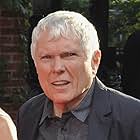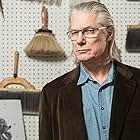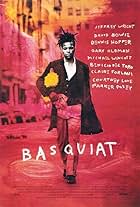Edo Bertoglio wonders aloud near the beginning of his film Face Addict, will his old friends answer his questions? The answer is yes, and they are very candid and transparent about the passions which drove them to lead the lives they led in the early 1980s in New York City.
One must feel that this film was sadder to make for Bertoglio, Maripol, and the others, than for us to watch it. For while we see them react as they remember the loss of those who were casualties of the drug use of those days, we see mostly those who are (in Edo's word) survivors.
And it is just those survivors who give Face Addict its Redemptive quality. While being honest about the lost opportunity, the lost friends, stemming from the drug use, Face Addict's survivors are nevertheless able to show humor, wit, and continued creativity. One wonders what magnitude of work this community of artists might have produced had they not saddled themselves with heroin, et cetera.
Much time is spent with violinist, painter, and one-time Warhol collaborator Walter Steding. Steding is, as Bertoglio notes, "the only one of us who still succeeds to live the way we lived back then." As one who loves to paint, I could not helped being very moved by Steding's soliloquy, delivered in muted lighting, on fulfilling his obligation as an artist no matter what it might cost him. This, for me, was the climax of the film. The viewer does not yet know whether Steding will truly end up in a Bowery flophouse (as he surmises could be the case if he follows his muse), but one is tempted to stand up and cheer after his carefully given but seemingly impromptu speech on what it means to follow a vocation as an artist. It seems clear that Walter has been over this theoretical ground with himself many times in his own mind. Near the end of the film, however, the viewer becomes a guest at an art opening of Steding's work, which is quite impressive.
Face Addict will also appeal to the viewer with an interest in the visual aspects of Manhattan. The music utilized during these passages, interspersed with Bertoglio's commentary on how his heroin addiction crept up and gripped him, is masterfully chosen.













